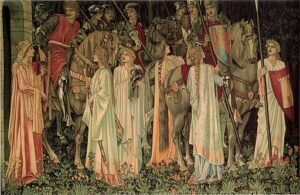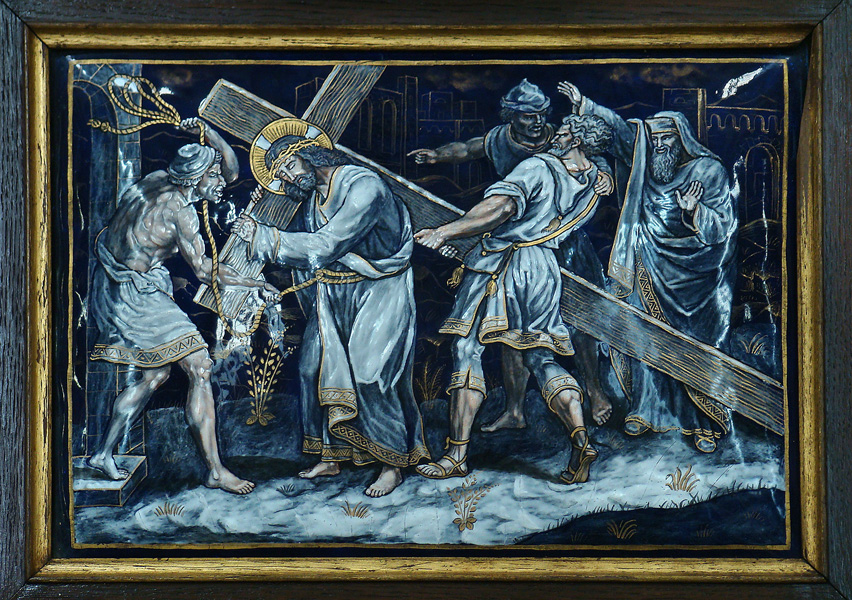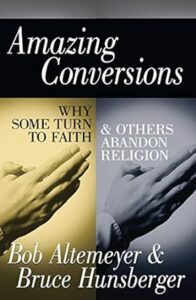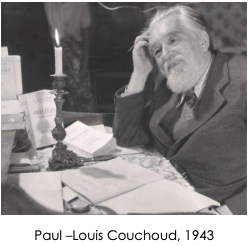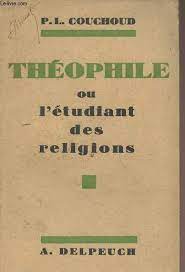Continuing to respond to The Authenticity of John the Baptist in Josephus. The previous two posts —
1. Where does John the Baptist fit in History? (Or, the Place of Fact and Opinion in History)
2. Where does John the Baptist fit in History? — The Evidence of Josephus, Pt 1
I would like to reiterate an approach I attempted to emphasize in my opening salvo. I am not arguing a black and white, slam-dunk case. If such existed there would be no discussion about this passage. One does not have to be persuaded one way or the other. I myself do not know if the John the Baptist passage in Josephus is an interpolation. It might be authentic. The best we can do is examine it critically. I think humility requires us to accept that there are reasonable grounds for suspecting it is an interpolation. Given those reasonable arguments there is necessarily some room for doubt. That means that the honest historian cannot dogmatically declare that Josephus wrote that passage. A historical reconstruction cannot validly be built on the conviction that Josephus wrote it — unless one makes clear the questionable nature of one of the foundations of that hypothetical reconstruction. I do not believe I am being hyper-sceptical or extreme. Rather than label arguments as “weak” or “not persuasive” — which sound like subjective impressions to me — I prefer to address whether arguments are logically valid or invalid and if they can marshal support with relevant evidence. To repeat, it doesn’t matter if one is persuaded or not. What matters is that one recognises that there are reasonable grounds for suspecting the authenticity of the passage. I understand why there will be some dogmatic and emotional resistance to that idea, but dogmatism and emotional attachment are not always the most faithful of friends — especially when working with ancient texts that come from a “culture of interpolations“.
By the way, I have never encountered historians in other (non-biblical) fields build historical reconstructions that rely on disputed evidence on which to stake their “facts” — at least not without acknowledging that the evidence for their claims is disputed. That’s not how history is done elsewhere, as far as I am aware. And the reason I believe I so often find myself at variance with certain conventional wisdoms in biblical studies is because I am always trying to examine the evidence with the same critical methods as are taken for granted in other historical fields. That means I have little time for “criteria of authenticity” and “memory theory” which seem to me to have a unique place in biblical scholarship.
Here is the John the Baptist passage in Jewish Antiquities 18.116-119
But to some of the Jews the destruction of Herod’s army seemed to be divine vengeance, and certainly a just vengeance, for his treatment of John, called the Baptist. For Herod had put him to death, though he was a good man and had exhorted the Jews who lead righteous lives and practice justice towards their fellows and piety toward God to join in baptism. In his view this was a necessary preliminary if baptism was to be acceptable to God. They must not employ it to gain pardon for whatever sins they committed, but as a consecration of the body implying [on the condition] that the soul was already thoroughly cleansed by righteousness. When others too joined the crowds about him, because they were aroused to the highest degree by his sermons. Herod became alarmed. Eloquence that had so great an effect on mankind might lead to some form of sedition, for it looked as if they would be guided by John in everything that they did. Herod decided therefore that it would be much better to strike first and be rid of him before his work led to an uprising, than to wait for an upheaval, get involved in a difficult situation, and see his mistake. Though John, because of Herod’s suspicions, was brought in chains to Machaerus, the stronghold that we have previously mentioned, and there put to death, yet the verdict of the Jews was that the destruction visited upon Herod’s army was a vindication of John, since God saw fit to inflict such a blow on Herod. (Nir, pp. 32f)
. . .
The next point Peter Kirby presents is more technical. He copies at length from another forum one side of a discussion about the place and use of δὲ, a word often but not always translated as “but”.
(15) Ant. 18.120 Incongruous without Ant. 18.116-119 (and Appropriate As-Is)
Here is Kirby’s point:
If Ant. 18.116-119 is removed from the text, it would read:
[Greek text omitted]
So Herod wrote about these affairs to Tiberius, who being very angry at the attempt made by Aretas, wrote to Vitellius to make war upon him, and either to take him alive, and bring him to him in bonds, or to kill him, and send him his head. This was the charge that Tiberius gave to the president of Syria. […]
“But” [δὲ] Vitellius prepared to make war with Aretas, …
This conjunction δὲ is not translated in the readily-available Whiston and Feldman in a way that makes the full force of the difficulty above in the Greek apparent to the English reader. Feldman leaves it untranslated, while Whiston translates it as “so” (which is actually not inappropriate, if it is understood in the very specific English sense of resuming the narrative after an interruption or parenthesis, as it functions after the passage on John the Baptist, not in some different sense of the English). Yet it is very strange if the passage reads as it is shown above.
Oh so close….. Yes, Whiston translates δὲ as “so” and we will soon see that that is indeed a most appropriate translation but not for the reason Kirby proposes.
Kirby follows with a lengthy selection from another forum by citing snippets from one side of a discussion on the use of this δὲ.
Focusing on the one word δὲ alone, though, draws attention away from the fact that what we have here are two words, a correlation, μὲν … δὲ, that are normally a linked pair to express meanings such as the following:
- both…and,
- on the one hand…on the other,
- one person [did such and such]….another person [did this and that],
- some [said]….others [said],
The Perseus online Liddell & Scott dictionary explains that δὲ can be an adversative (=”but”) and also a copulative (=”and”, “so” etc)
As for translations of the μέν…δέ pair, the same dictionary explains:
Generally, μέν and δέ may be rendered on the one hand, on the other hand, or as well . . , as, while or whereas, but it is often necessary to leave μέν untranslated.
Here’s an instance in Acts 14:4
εσχισθη δε το πληθος της πολεως και οι μεν ησαν συν τοις ιουδαιοις οι δε συν τοις αποστολοις
But the people of the city were divided some sided with the Jews and some with the apostles
From Dobson’s Learn New Testament Greek:
μὲν…δὲ . . .
When two ideas or words are compared or contrasted they are often liked by μὲν… and δὲ …. In English we often use “but” for δὲ. We do not have a word which quite corresponds to μὲν. “On the one hand” and “on the other hand” are rather too weighty for μὲν and δὲ.
(p. 263)
Ken Olson has written in a forum discussion:
The μὲν … δὲ construction distinguishes one party’s activities from those of another. There’s no requirement of a cause and effect relationship between the two, nor that they be in opposition. To use an example that springs readily to my mind, Jesus in the Testimonium Flavianum won over many of the Jews, but also many of Hellenes. What would be irregular is for the μὲν not to be related to the δὲ which follows it.
(the bolding is mine in all quotations)
Other works explain that this correlative was far more common in classical Greek than it was in New Testament and later times. But a search for μέν and δέ in the Loeb editions of Antiquities will quickly show anyone interested that Josephus made frequent use of it.
With all of that in mind, we are now in a position to grasp Rivka Nir’s discussion of how the John the Baptist passage can be understood to intrude into otherwise naturally sequential sentences or passages. It can be read as breaking apart the μέν…δέ structure beyond recognition.
How this passage is integrated into the text is suspect. Inserted midway into the description of events following the defeat of Herod Antipas, betweenTiberius’s order to Vitellius to prepare for war against Aretas and Vitellius’s preparations, it constitutes a self-contained literary unit that disrupts the descriptive sequence.38 In terms of syntax, as Léon Herrmann has pointed out,39 it is inserted halfway through a sentence structured on καί μέν and δε, which suggest the narrative sequence. Namely, between paragraph 115, which concludes with the sentence: ‘These were the orders that Tiberius gave to the proconsul of Syria [και Τιβέριος μέν ταυ τα πράσσειν έπέστελλεντω κατά Συρίαν στρατηγώ]’, and paragraph 120, which opens with the sentence: ‘So Vitellius prepared to make war with Aretas . . . and made haste for Petra, and came to Ptolemais [Ούιτέλλιος δέ παρασκευασάμενοςώς εις πόλεμον τόν προς Αρέταν. . . έπι της Πέτρας ήπείγετο καί έσχε Πτολεμαίδα]’. On removal of the passage, paragraph 120, flows smoothly and uninterruptedly from paragraph 115, and the order of events and correct syntactical structure are retained: Tiberius commands and Vitellius acts.
38. For Meier (A Marginal Jew, 11. pp. 56. 59-60). this literary unit is. by way of an inclusio. framed by certain key words and themes clustered at the beginning and the end. Il opens with ‘But to some of the Jews the destruction of Herod’s army seemed to be divine vengeance, and certainly a just vengeance, for his treatment of John, called the Baptist’, and ends with ‘and there put to death, yet the verdict of the Jews was that the destruction visited upon Herod’s army was a vindication of John, since God saw lit to inflict such a blow on Herod’.
39. Herrmann. Chrestos, p. 99; L. Herrmann. ’Herodiade’, REJ 132 (1973), pp. 49-63 (51).
(Nir, 43f)
In addition…
Furthermore, Josephus had already explained how ‘all Herod’s army was destroyed by the treachery of some fugitives, who, though they were of the tetrarchy of Philip, joined with Aretas’s army’ (Ant. 114), his seemingly historical explanation for Herod’s defeat which is placed in the appropriate context. Why, then, would Josephus need to provide an additional explanation? And why place it at a distance from his first explanation, and moreover in a way that interrupts the factual sequence?
(Nir, 44)
It is at this point that Nir addressed the chronological and political incongruities vis a vis the New Testament — as quoted in the previous post.
Kirby then introduces the arguments for inauthenticity:
(1) The Text Reads Intelligibly if the Passage Is Removed
We have just seen how syntactic irregularity can be restored if the passage is removed. So a more general “intelligibility” is not the only factor open for consideration.
We also know that Josephus elsewhere broke a narrative with digressions. What is of interest, though, is a comparison of other places where Josephus makes those (removable) digressions. I have selected the “removable” insert passages from Kirby’s list but want to draw attention to how the narrative on either side of those inserts flows. Above we saw how the John the Baptist passage seems to break into what we would expect to be a tight syntactical structure. It interrupts two sentences that belong naturally together: the emperor gives the order and the proconsul obeys. Compare the surrounding passages in each of the following digressions and see if you can find anything similar. Or are the breaks more natural, more logical, such that the digression does not rip apart something like an ordered action and its correlative partner-statement that it was obeyed?
Honi the Circle-Drawer (c. 65 BCE) ~ Jewish Antiquities 14.21-28.
Because of these promises which were made to him, Aretas marched against Aristobulus with an army of fifty thousand horsemen and foot soldiers as well, and defeated him in battle. After his victory many deserted to Hyrcanus, and Aristobulus, being left alone, fled to Jerusalem. Thereupon the Arab king took his whole army and attacked the temple, where he besieged Aristobulus ; and the citizens, joining Hyrcanus’ side, assisted him in the siege, while only the priests remained loyal to Aristobulus. . . .
And so Aretas placed the camps of the Arabs and Jews next to one another, and pressed the siege vigorously. But as this action took place at the time of observing the festival of Unleavened Bread, which we call Phaska, the Jews of best repute left the country and fled to Egypt. Now there was a certain The saintly Oni Onias, who, being a righteous man and dear to God, had once in a rainless period prayed to God to end the drought, and God had heard his prayer and sent rain; this man hid himself when he saw that the civil war continued to rage, but he was taken to the camp of the Jews and was asked to place a curse on Aristobulus and his fellow-rebels, just as he had, by his prayers, put an end to the rainless period. But when in spite of his refusals and excuses he was forced to speak by the mob, he stood up in their midst and said, “ O God, king of the universe, since these men standing beside me are Thy people, and those who are besieged are Thy priests, I beseech Thee not to hearken to them against these men nor to bring to pass what these men ask Thee to do to those others.” And when he had prayed in this manner the villains among the Jews who stood round him stoned him to death. (2) But God straightway punished them for this savagery, and exacted satisfaction for the murder of Onias in the following manner. While the priests and Aristobulus were being besieged, there happened to come round the festival called Phaska, at which it is our custom to offer numerous sacrifices to God. But as Aristobulus and those with him lacked victims, they asked their countrymen to furnish them with these, and take as much money for the victims as they wished. And when these others demanded that they pay a thousand drachmas for each animal they wished to get, Aristobulus and the priests willingly accepted this price and gave them the money, which they let down from the walls by a rope. Their countrymen, however, after receiving the money did not deliver the victims, but went to such lengths of villainy that they violated their pledges and acted impiously toward God by not furnishing the sacrificial victims to those who were in need of them.* But the priests, on suffering this breach of faith, prayed to God to exact satisfaction on their behalf from their countrymen ; and He did not delay their punishment, but sent a mighty and violent wind to destroy the crops of the entire country, so that people at that time had to pay eleven drachmas for a modius of wheat.
. . . Meanwhile Pompey sent Scaurus also to Syria, as he himself was in Armenia, still making war on Tigranes. And when Scaurus came to Damascus, he found that Lollius and Metellus had just taken the city, and so he hurried on to Judaea. On his arrival envoys came to him from both Aristobulus and Hyrcanus, each of whom asked him to come to his aid.
(All translations are from the Loeb edition of Antiquities.)
Galilean Cave Brigands (c. 38 BCE) ~ Jewish Antiquities 14.415-430.
Herod, however, did not choose to remain inactive, but sent off his brother Joseph to Idumaea with two thousand foot-soldiers and four hundred mounted men, while he himself went to Samaria, where he left his mother and his other relatives, who had by now made their way out of Masada, and proceeded to Galilee to capture some of the strongholds which had been occupied by the garrisons of Antigonus. He reached Sepphoris in a snow-storm, and as Antigonus’ garrison had quietly withdrawn, he came into possession of an abundance of provisions. . . .
From here he then sent out a troop of cavalry and three companies of foot-soldiers against some brigands living in caves, for he had made up his mind to put an end to their depredations’; these caves were very near a village called Arbela. Forty days later he himself came with his entire army, and under the enemy’s bold attack the left wing of his line gave way, but when he appeared in person with a compact body of men, he put to flight those who had before been victorious, and rallied those of his men who were fleeing. And he pressed on in pursuit of the enemy as far as the river Jordan, to which they fled along different roads ; and so he got into his hands all the people of Galilee except those who lived in the caves? he then distributed money, giving each of his men a hundred and fifty drachmas, and considerably more to the officers, and dismissed them to their winter quarters. Meanwhile Silo and the officers of the men who were in winter quarters came to him because Antigonus was unwilling to furnish them with food; that worthy had fed them for a month and no longer he had, moreover, sent out orders to the inhabitants round about that they were to gather up all the provisions throughout the country and flee to the hills in order that the Romans might be entirely without necessary food and so perish of hunger. Accordingly Herod entrusted the care of these men to Pheroras, his youngest brother, and ordered him to fortify Alexandreion also. And he quickly made it possible for the soldiers to have an abundance of the necessary provisions, and also restored Alexandreion, which had been left in ruins. About the same time, while Antony was staying at Athens, Ventidius in Syria sent for Silo to join him against the Parthians, but instructed him first to assist Herod in the present war and then summon their allies to the Romans’ own war. But Herod, who was hastening against the brigands in the caves, sent Silo off to Ventidius, and set out against them by himself. Now their caves were in hills that were altogether rugged, having their entrances half-way up the sheer cliffs and being surrounded by sharp rocks; in such dens did they lurk with all their people. Thereupon the king, whose men were unable either to climb up from below or creep upon them from above because of the steepness of the hill, had cribs built and lowered these upon them with iron chains as they were suspended by a machine from the summit of the hill. The cribs were filled with armed men holding great grappling hooks, with which they were supposed to draw towards them any of the brigands who opposed them, and kill them by hurling them to the ground. The lowering of the cribs was proving to be a risky business because of the immense depth that lay below them, although the men within them had everything they needed. But when the cribs were let down, none of the men standing near the entrances of the caves dared come forward? instead, they remained quiet out of fear, whereupon one of the soldiers in irritation at the delay caused by the brigands who dared not come out, girded on his sword, and heading on with both hands to the chain from which the crib was suspended, lowered himself to the entrance of a cave. And when he came opposite an entrance, he first drove back with javelins most of those who were standing there, and then with his grappling hook drew his opponents towards him and pushed them over the precipice; after this he attacked those within and slaughtered many of them, whereupon he re-entered the crib and rested. Then fear seized the others as they heard the shrieking, and they despaired of their lives; all action, however, was halted by the coming on of night; and many, after sending spokesmen with the king’s consent, surrendered and made their submission. The same method of attack was used the following day, when the men in the baskets d fell upon them still more fiercely and fought at their doors and threw flaming fire inside, and so the caves, which had much wood in them, were set on fire. Now there was an old man shut up within one of the caves with his seven children and his wife : and when they begged him to let them slip through to the enemy, he stood at the entrance and cut down each of his sons as he came out, and afterwards his wife, and after hurling their dead bodies over the precipice, threw himself down upon them, thus submitting to death rather than to slavery. But before doing so, he bitterly reviled Herod for his meanness of spirit, although the king—for he was a witness of what was happening—stretched out his right hand and promised him full immunity. By such methods, then, all the caves were finally taken.
. . . The king thereupon appointed Ptolemy general in that region, and departed for Samaria with six hundred mounted men and three thousand foot-soldiers to try the issue of battle with Antigonus.
The next “insert” passages by Josephus are actually a series of incidents all grouped together. So I will quote the edges of the bracketing narrative before and after them.
Meanwhile continuous and countless new tumults filled Judaea, and in many quarters many men rose in arms either in hope of personal gain or out of hatred for the Jews. For example, two thousand of the soldiers who had once campaigned with Herod and had been disbanded, now assembled in Judaea itself and fought against the king’s troops. These were led against them by Achiab, a cousin of Herod, but he was forced out of the plains into higher country by the enemy, who were very experienced in warfare, and by retreating to an inaccessible position, he saved what he could. . . .
Judas son of Hezekiah (c. 4 BCE) ~ Jewish Antiquities 17.271-272.
Then there was Judas, the son of the brigand chief Ezekias, who had been a man of great power and had been captured by Herod only with great difficulty. This Judas got together a large number of desperate.men at Sepphoris in Galilee and there made an assault on the royal palace, and having seized all the arms that were stored there, he armed every single one of his men and made off with all the property that had been seized there. He became an object of terror to all men by plundering those he came across in his desire for great possessions and his ambition for royal rank, a prize that he expected to obtain not through the practice of virtue but through excessive ill-treatment of others.
Simon of Peraea (c. 4 BCE) ~ Jewish War 2.57-59 and Jewish Antiquities 17.273-277. (Removable.)
There was also Simon, a slave of King Herod but a handsome man, who took pre-eminence by size and bodily strength, and was expected to go farther. Elated by the unsettled conditions of affairs, he was bold enough to place the diadem on his head, and having got together a body of men, he was himself also proclaimed king by them in their madness, and he rated himself worthy of this beyond anyone else. After burning the royal palace in Jericho, he plundered and carried off the things that had been seized there. He also set fire to many other royal residences in many parts of the country and utterly destroyed them after permitting his fellow-rebels to take as booty whatever had been left in them. And he would have done something still more serious if attention had not quickly been turned to him. For Gratus, the officer of the royal troops, joined the Romans and with what forces he had went to meet Simon. A long and heavy battle was fought between them, and most of the Peraeans, who were disorganized and fighting with more recklessness than science, were destroyed. As for Simon, he tried to save himself by fleeing through a ravine, but Gratus intercepted him and cut off his head. The royal palace at Ammatha on the river Jordan was also burnt down by some rebels, who resembled those under Simon. Such was the great madness that settled upon the nation because they had no king of their own to restrain the populace by his pre-eminence, and because the foreigners who came among them to suppress the rebellion were themselves a cause of provocation through their arrogance and their greed.
Athronges (c. 4-2? BCE) ~ Jewish Antiquities 17.278-284. (Removable.)
Then there was a certain Athronges, a man distinguished neither for the position of his ancestors nor by the excellence of his character, nor for any abundance of means but merely a shepherd completely unknown to everybody although he was remarkable for his great stature and feats of strength. This man had the temerity to aspire to the kingship, thinking that if he obtained it he would enjoy freedom to act more outrageously; as for meeting death, he did not attach much importance to the loss of his life under such circumstances. He also had four brothers, and they too were tall men and confident of being very successful through their feats of strength, and he believed them to be a strong point in his bid for the kingdom. Each of them commanded an armed band, for a large number of people had gathered round them. Though they were commanders, they acted under his orders whenever they went on raids and fought by themselves. Athronges himself put on the diadem and held a council to discuss what things were to be done, but everything depended upon his own decision. This man kept his power for a long while, for he had the title of king and nothing to prevent him from doing as he wished. He and his brothers also applied themselves vigorously to slaughtering the Romans and the king’s men, toward both of whom they acted with a similar hatred, toward the latter because of the arrogance that they had shown during the reign of Herod, and toward the Romans because of the injuries that they were held to have inflicted at the present time. But as time went on they became more and more savage (toward all) alike. And there was no escape for any in any way, for sometimes the rebels killed in hope of gain and at other times from the habit of killing. On one occasion near Emmaus they even attacked a company of Romans, who were bringing grain and weapons to their army. Surrounding the centurion Arms, who commanded the detachment, and forty of the bravest of his foot-soldiers, they shot them down. The rest were terrified at their fate but with the protection given them by Gratus and the royal troops that were with him they made their escape, leaving their dead behind. This kind of warfare they kept up for a long time and caused the Romans no little trouble while also inflicting much damage on their own nation. But the brothers were eventually subdued, one of them in an engagement with Gratus, the other in one with Ptolemy. And when Archelaus captured the eldest, the last brother, grieving at the other’s fate and seeing that he could no longer find a way to save himself now that he was all alone and utterly exhausted, stripped of his force, surrendered to Archelaus on receiving a pledge sworn by his faith in God (that he would not be harmed). But this happened later.
The main narrative resumes at Ant 17.285
. . . . And so Judaea was filled with brigandage. Anyone might make himself king as the head of a band of rebels whom he fell in with, and then would press on to the destruction of the community, causing trouble to few Romans and then only to a small degree but bringing the greatest slaughter upon their own people.
That’s the group of three “digressions” (or rather illustrations of the theme in the main narrative, if one wanted to be exact about the evidence we are discussing.)
Tholomaus (early 40s CE) ~ Jewish Antiquities 20.5.
Fadus, on being informed of this, was greatly incensed that the Peraeans, granted that they thought themselves wronged by the Philadelphians, had not waited for him to give judgement but had instead resorted to arms. He therefore seized three of their leaders, who were in fact responsible for the revolt and ordered them to be held prisoner. Next he put one of them, named Annibas, to death, and imposed exile on the other two, Amaramus and Eleazar. . . .
20.5 Not long afterwards Tholomaeus the arch-brigand, who had inflicted very severe mischief upon Idumaea and upon the Arabs, was brought before him in chains and put to death.
. . . . From then on the whole of Judaea was purged of robber-bands, thanks to the prudent concern displayed by Fadus.
Theudas (c. 45 CE) ~ Jewish Antiquities 20.97-98.
Monobazus sent her bones and those of his brother to Jerusalem with instructions that they should be buried in the three pyramids that his mother had erected at a distance of three furlongs from the city of Jerusalem. As for the acts of King Monobazus during his lifetime, I shall narrate them later. . . .
During the period when Fadus was procurator of Judaea, a certain impostor named Theudas persuaded the majority of the masses to take up their possessions and to follow him to the Jordan River. He stated that he was a prophet and that at his command the river would be parted and would provide them an easy passage. With this talk he deceived many. Fadus, however, did not permit them to reap the fruit of their folly, but sent against them a squadron of cavalry. These fell upon them unexpectedly, slew many of them and took many prisoners. Theudas himself was captured, whereupon they cut off his head and brought it to Jerusalem. These, then, are the events that befell the Jews during the time that Cuspius Fadus was procurator.
. . . . The successor of Fadus was Tiberius Alexander, the son of that Alexander who had been alabarch in Alexandria and who surpassed all his fellow citizens both in ancestry and in wealth.
Eleazar ben Dinai (30s-50s CE) ~ Jewish Antiquities 20.161.
In Judaea matters were constantly going from bad to worse. For the country was again infested with bands of brigands and impostors who deceived the mob. Not a day passed, however, but that Felix captured and put to death many of these impostors and brigands.. . . .
He also, by a ruse, took alive Eleazar the son of Dinaeus, who had organized the company of brigands ; for by offering a pledge that he would suffer no harm, Felix induced him to appear before him. Felix then imprisoned him and dispatched him to Rome.
. . . . Felix also bore a grudge against Jonathan the high priest because of his frequent admonition to improve the administration of the affairs of Judaea.
The Egyptian prophet (c. 56 CE) ~ Jewish Antiquities 20.169-172 [corr. from 171].
With such pollution did the deeds of the brigands infect the city. Moreover, impostors and deceivers called upon the mob to follow them into the desert. For they said that they would show them unmistakable marvels and signs that would be wrought in harmony with God’s design. Many were, in fact, persuaded and paid the penalty of their folly; for they were brought before Felix and he punished them. . . .
At this time there came to Jerusalem from Egypt a man who declared that he was a prophet and advised the masses of the common people to go out with him to the mountain called the Mount of Olives, which lies opposite the city at a distance of five furlongs. For he asserted that he wished to demonstrate from there that at his command Jerusalem’s walls would fall down, through which he promised to provide them an entrance into the city. When Felix heard of this he ordered his soldiers to take up their arms. Setting out from Jerusalem with a large force of cavalry and infantry, he fell upon the Egyptian and his followers, slaying four hundred of them and taking two hundred prisoners. The Egyptian himself escaped from the battle and disappeared. And now the brigands once more incited the populace to war with Rome, telling them not to obey them. They also fired and pillaged the villages of those who refused to comply.
. . . There arose also a quarrel between the Jewish and Syrian inhabitants of Caesarea on the subject of equal civic rights.
An anonymous prophet (59 CE) ~ Jewish Antiquities 20.188.
For, as we said previously,” they would mingle at the festivals with the crowd of those who streamed into the city from all directions to worship, and thus easily assassinated any that they pleased. They would also frequently appear with arms in the villages of their foes and would plunder and set them on fire. . . .
Festus also sent a force of cavalry and infantry against the dupes of a certain impostor who had promised them salvation and rest from troubles, if they chose to follow him into the wilderness. The force which Festus dispatched destroyed both the deceiver himself and those who had followed him.
. . . About this time King Agrippa built a chamber of unusual size in his palace at Jerusalem adjoining the colonnade.
Eleazar, an exorcist ~ Jewish Antiquities 8.46-49.
And God granted him [Solomon] knowledge of the art used against demons for the benefit and healing of men. He also composed incantations by which illnesses are relieved, and left behind forms of exorcisms with which those possessed by demons drive them out, never to return. . . .
And this kind of cure is of very great power among us to this day, for I have seen a certain Eleazar, a countryman of mine, in the presence of Vespasian, his sons, tribunes and a number of other soldiers, free men possessed by demons, and this was the manner of the cure : he put to the nose of the possessed man a ring which had under its seal one of the roots prescribed by Solomon, and then, as the man smelled it, drew out the demon through his nostrils, and, when the man at once fell down, adjured the demon never to come back into him, speaking Solomon’s name and reciting the incantations which he had composed. Then, wishing to convince the bystanders and prove to them that he had this power, Eleazar placed a cup or foot- basin full of water a little way off and commanded the demon, as it went out of the man, to overturn it and make known to the spectators that he had left the man. And when this was done, the understanding and wisdom of Solomon were clearly revealed, on account of which we have been induced to speak of these things, in order that all men may know the greatness of his nature and how God favoured him, and that no one under the sun may be ignorant of the king’s surpassing virtue of every kind.
. . . Now when Eiromos, the king of the Tyrians, heard that Solomon had succeeded to his father’s kingdom, he was overjoyed, for he was a friend of David, and sent him greetings and congratulations on his present good fortune.
These are but a smattering of the digressions in Josephus but I would be interested to know if any of them break up a narrative sentence by sentence tight logical sequence as does the John the Baptist passage. To my mind none of the above instances break a “this…that” or an “A so B” type of naturally proximate passage.
That’s enough for one post. More to come.
Kirby, Peter. “The Authenticity of John the Baptist in Josephus.” Peter Kirby: Just Another WordPress Site, 21 May 2015, https://peterkirby.com/john-the-baptist-authentic.html.
Nir, Rivka. The First Christian Believer: In Search of John the Baptist. Sheffield Phoenix Press, 2019.

